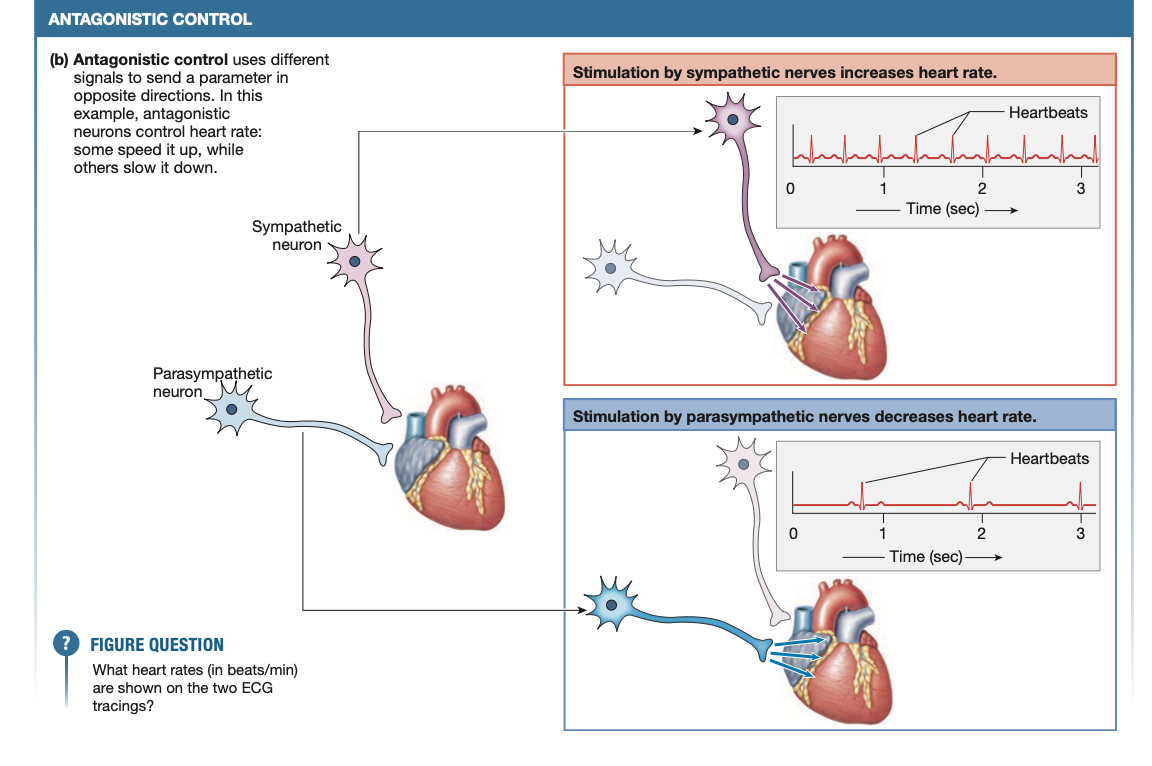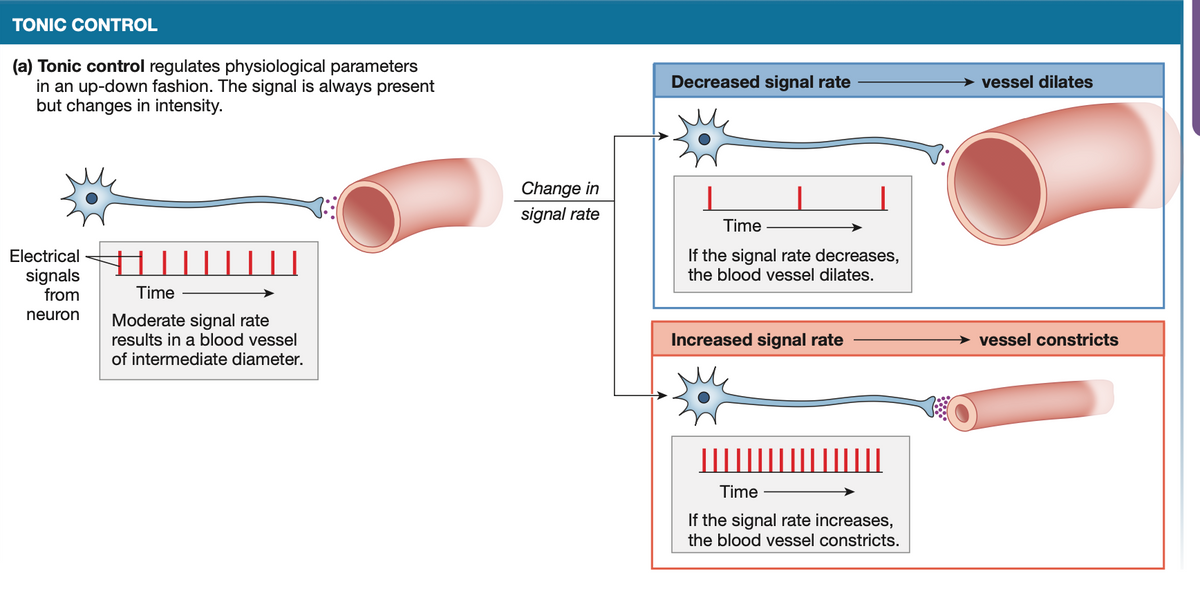Anatomy & Physiology
1st Edition
ISBN:9781938168130
Author:Kelly A. Young, James A. Wise, Peter DeSaix, Dean H. Kruse, Brandon Poe, Eddie Johnson, Jody E. Johnson, Oksana Korol, J. Gordon Betts, Mark Womble
Publisher:Kelly A. Young, James A. Wise, Peter DeSaix, Dean H. Kruse, Brandon Poe, Eddie Johnson, Jody E. Johnson, Oksana Korol, J. Gordon Betts, Mark Womble
Chapter13: Anatomy Of The Nervous System
Section: Chapter Questions
Problem 7ILQ: Watch this animation (http://openstaxcollege.org/l/bloodflow1) to see how blood flows to the brain...
Related questions
Question
- Explain the difference between tonic and antagonistic control of homeostatic balance. Fig. 6.15 Give two examples of each.

Transcribed Image Text:ANTAGONISTIC CONTROL
(b) Antagonistic control uses different
signals to send a parameter in
opposite directions. In this
example, antagonistic
neurons control heart rate:
Stimulation by sympathetic nerves increases heart rate.
Heartbeats
some speed it up, while
others slow it down.
2
3
Time (sec) –
Sympathetic
neuron
Parasympathetic
neuron
Stimulation by parasympathetic nerves decreases heart rate.
Heartbeats
2
3
Time (sec)
? FIGURE QUESTION
What heart rates (in beats/min)
are shown on the two ECG
tracings?

Transcribed Image Text:TONIC CONTROL
(a) Tonic control regulates physiological parameters
in an up-down fashion. The signal is always present
but changes in intensity.
Decreased signal rate
vessel dilates
Change in
signal rate
Time
Electrical
If the signal rate decreases,
the blood vessel dilates.
signals
from
Time
neuron
derate signal rate
results in a blood vessel
of intermediate diameter.
Increased signal rate
vessel constricts
Time
If the signal rate increases,
the blood vessel constricts.
Expert Solution
This question has been solved!
Explore an expertly crafted, step-by-step solution for a thorough understanding of key concepts.
This is a popular solution!
Trending now
This is a popular solution!
Step by step
Solved in 2 steps

Recommended textbooks for you

Anatomy & Physiology
Biology
ISBN:
9781938168130
Author:
Kelly A. Young, James A. Wise, Peter DeSaix, Dean H. Kruse, Brandon Poe, Eddie Johnson, Jody E. Johnson, Oksana Korol, J. Gordon Betts, Mark Womble
Publisher:
OpenStax College


Human Physiology: From Cells to Systems (MindTap …
Biology
ISBN:
9781285866932
Author:
Lauralee Sherwood
Publisher:
Cengage Learning

Anatomy & Physiology
Biology
ISBN:
9781938168130
Author:
Kelly A. Young, James A. Wise, Peter DeSaix, Dean H. Kruse, Brandon Poe, Eddie Johnson, Jody E. Johnson, Oksana Korol, J. Gordon Betts, Mark Womble
Publisher:
OpenStax College


Human Physiology: From Cells to Systems (MindTap …
Biology
ISBN:
9781285866932
Author:
Lauralee Sherwood
Publisher:
Cengage Learning